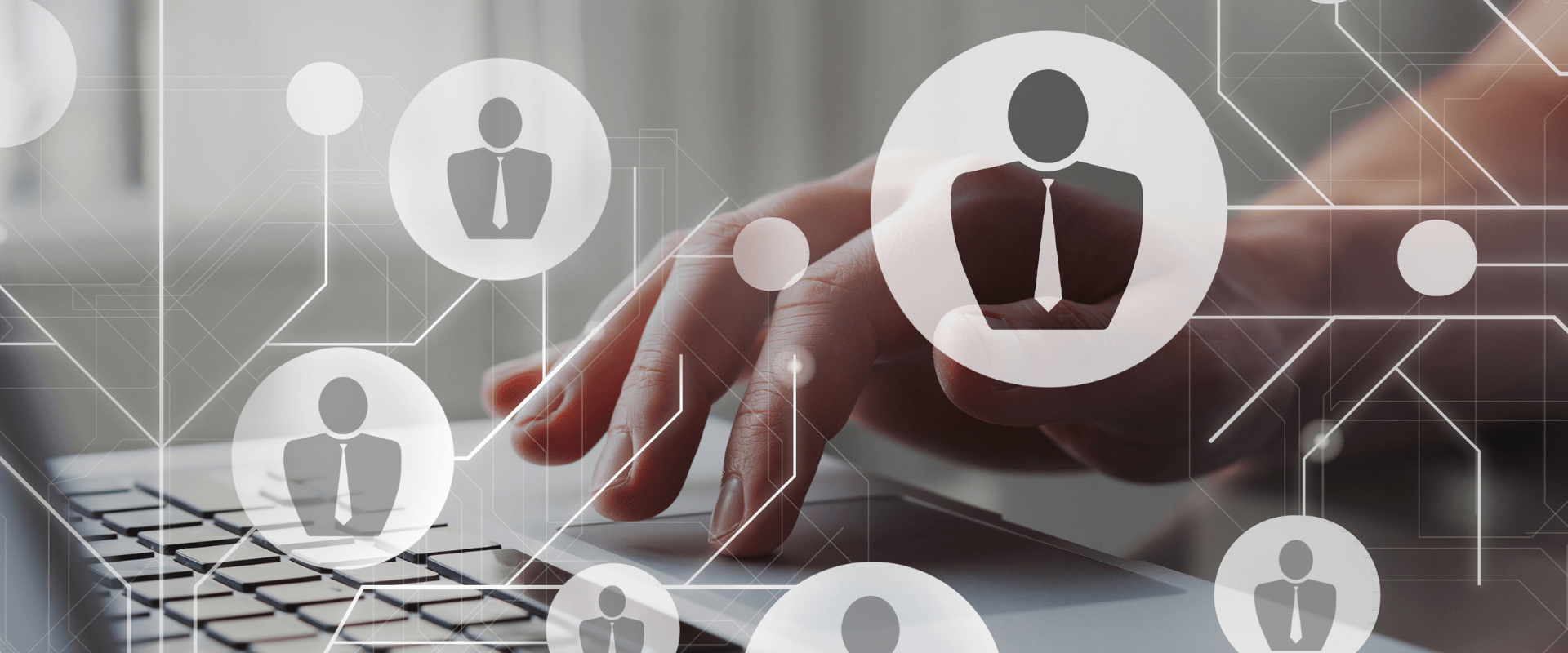
Types of HR Software Applications
If you feel unsupported by your current payroll and HR provider, or if your everyday processes are no longer meeting your business needs, it may be time to explore new options. As you research HR technology, you’ve probably come across terms like HCM, HRIS, and HRMS—and you might be wondering what an HRIS system is. These terms can lead to confusion and indecision if you’re unsure about their definitions or differences.
While these terms are used loosely and interchangeably in HR technology, we’ve agreed on what each solution best encompasses. Let’s explore HRIS vs. HRMS vs. HCM solutions. So, when you’re ready to switch and invest in a new HR software, you select a best-in-class system that meets your organization’s needs.
What is HRIS Software?
A Human Resource Information System (HRIS) is a centralized platform for storing and managing your core employee data, replacing error-prone spreadsheets and paper files.
HRIS software streamlines tasks like tracking personal details, documents, and compliance, while features like self-service and reporting help improve your accuracy, efficiency, and HR decision-making. HRIS systems typically provide the following functionality:
- Payroll and Tax Compliance: Process payroll using correctly calculated wages and salaries, and manage deductions for taxes and benefits.
- Attendance: Track employee hours worked, accrual balances, PTO, and manage schedules.
- Benefits Administration: Manage benefits information, track compliance, and allow employees to enroll online.
- Personnel Tracking: Manage an online employee directory that includes contact information, position details, and personal information.
- Self Service: Provide employees with access to data and functionality like updating personal information, enrolling in benefits, and checking accrual balances. This delegation of responsibility also creates a more engaged work culture.
What is HRMS Software?
A key goal of HR management is maximizing your organization’s productivity by improving employee effectiveness. While an HRIS manages employee records, a Human Resource Management System (HRMS) tracks your entire employee lifecycle.
HRMS tools provide valuable insights into workforce trends, helping both HR and leadership make informed business decisions. Common HRMS components include:
- Performance Management: Set and manage employee performance goals and evaluations.
- Recruiting: Manage the hiring process by posting job openings, receiving online applications, and tracking candidates.
- Onboarding: Streamline the new hire proces by automating paperwork and tracking training progress.
- Reporting: Pull metrics and analytics for company trends and actionable insight.
While HRIS and HRMS support engagement from recruiting, HRMS goes further by enabling personalized goal setting and continuous performance tracking in one platform.
An HRMS helps support career development as your company grows, leading to higher engagement and lower turnover, making it a smarter long-term investment.
What is HCM Software?
Human capital management (HCM) refers to the strategies and tools used to acquire, manage, and develop a workforce. The goal is to maximize the value of employees — your human capital — to drive business success.
An HCM system combines core HR functions with tools for workforce planning, talent development, and data-driven decision-making. It helps organizations like yours optimize talent, enhance compensation strategies, and support long-term growth.
Here are some key capabilities of an HCM platform that you might find helpful:
- Administrative Functions: Employee data, benefits administration, payroll administration, and self-service portals for employees.
- Company Data: Access to company documents and data, and an organizational knowledge base.
- Talent Management: Recruiting, onboarding, training, applicant tracking, online job board posting, performance tracking, and management.
- Labor and Workforce Management: Time and attendance, scheduling, self-service options, and budgeting.
Key Differences Between HRIS, HCM and HRMS
Though often used interchangeably, HRIS, HRMS, and HCM each offer different levels of HR support. Here’s how they compare:
- HRIS (Human Resource Information System):
A foundational system focused on essential HR tasks like payroll, benefits, time tracking, and compliance. This is the best solution if you have a small business. - HRMS (Human Resource Management System):
Expands on HRIS by offering tools for the full employee lifecycle, such as onboarding, performance reviews, and reporting. Great if you have a growing business ready to streamline and automate HR workflows. - HCM (Human Capital Management):
The most comprehensive option for your organization. HCM includes everything in HRMS and adds strategic capabilities like:- Onboarding and performance management
- Position mapping and workforce planning
- Salary and benefits benchmarking
- Global compliance
- Advanced HR analytics
An HCM solution is ideal for aligning HR operations with long-term business strategy and talent development.
In summary:
- HRIS = Core HR basics
- HRMS = Core + management tools
- HCM = Strategic, full-suite workforce solution
Understanding the scope of each system helps you choose the right fit for your business today — and where it’s headed tomorrow.
HRIS, HCM and HRMS Similarities
HRIS, HRMS, and HCM all deal with workforce management issues, such as recruitment, employment, orientation, training and development, payroll, benefits, performance analysis, and other concerns.
Hence, the three systems often overlap in their features and functions. Although often used interchangeably, HRMS is sometimes viewed as the more complete version of HRIS, and the two tend to share more features in common. HCM is the most diverse as it encompasses the elements of HRMS and additional unique features.
Since the definitions of HRIS, HRMS, and HCM all cover HR issues and concerns, it’s always advisable to examine the benefits and features of a solution to ensure that it aligns with what your organization is seeking in HR software
| HRIS | HRMS | HCM |
|---|---|---|
| Payroll | HRIS Capabilities | HRMS Capabilities |
| Tax Compliance | Performance Management | Scheduling |
| Benefits Administration | Succession Planning | Applicant Tracking |
| Time & Attendance | Recruiting | Training |
| Personnel Tracking | Onboarding | Budget Planning |
| Reporting | Absence Management | |
| Employee Self-Service Options |
Workforce Management vs. Human Capital Management (HCM)
Heard of Workforce Management? Don’t be confused. WFM is also a phrase used in HR conversations, but it differs from the solutions we’ve described. It revolves around labor utilization.
WFM focuses on managing compliance risks and optimizing worker shift schedules. An HCM takes WFM to the next level by encompassing the full range of HR management.
Why HR Professionals Need Smart Solutions to Support the Employee Experience
Modern HR departments are vital in improving the employee experience, especially when managing sensitive employee information and complex employee benefits. Offering inclusive and comprehensive health coverage can significantly enhance your workforce’s well-being and retention.
That’s where intelligent HRIS solutions come in. By centralizing your benefits data and automating updates, you can better support employees’ diverse needs, delivering personalized experiences while reducing manual workloads and compliance risks.
Which System Should You Choose?
We hope we’ve clarified the confusion surrounding the HCM vs. HRIS vs. HRMS technology topic by exploring the key differences between HRIS and HCM and HRMS. When choosing the best HR software, you must assess your company’s needs and determine which solution fits your organization.
When investing in HR software, you should consider functionalities, data recovery, cost, analytics, limitations, and customer service. Systems designed to unify different aspects of HR in one place:
- Increase efficiency
- Improve usability
- Reduce operational costs
- Bolster security
When deciding whether to invest in HRIS vs. HRMS vs. HCM, it’s essential to do your research to make an informed decision. As your business grows, having an intuitive HR system that can grow with you is a must.
How APS Can Help
APS is a cloud-based HR platform that simplifies the entire employee lifecycle — from hire to retire.
Our all-in-one system includes Payroll, Core HR, Scheduling, Attendance, Recruiting, and ACA Reporting, with secure self-service tools for employees and managers. Start with payroll and scale as your needs grow.
Interested in learning more about APS?
Download our Payroll & HR Buyer’s Guide for more information on our all-in-one HCM solution.

Sources
What Is HRIS? System, Model, and Application
What Every Business Owner Needs to Know About Human Resource Management
Human Capital Management (HCM)
HRIS (Human Resource Information System)
What Is Human Capital Management & Why Is It Important?
Human Resources Information Systems | U.S. Department of Veterans Affairs











